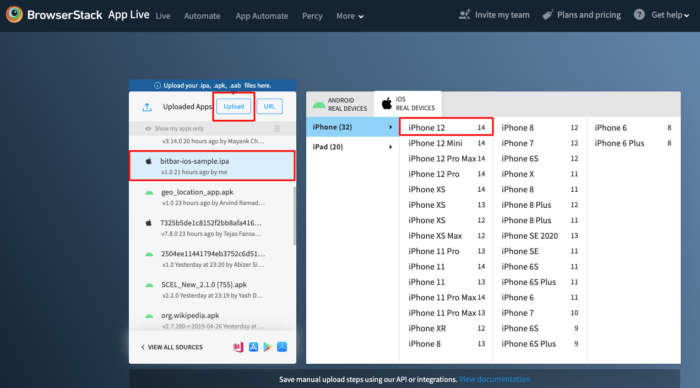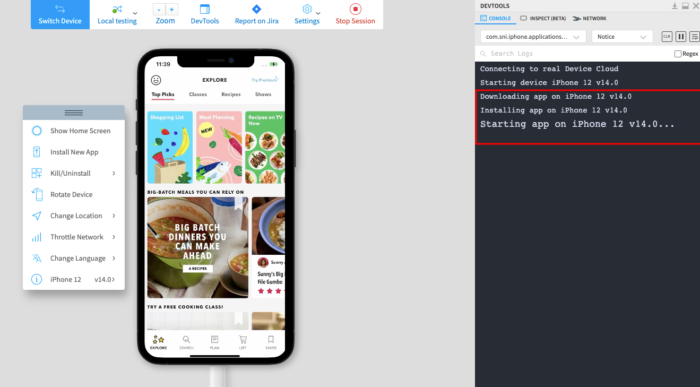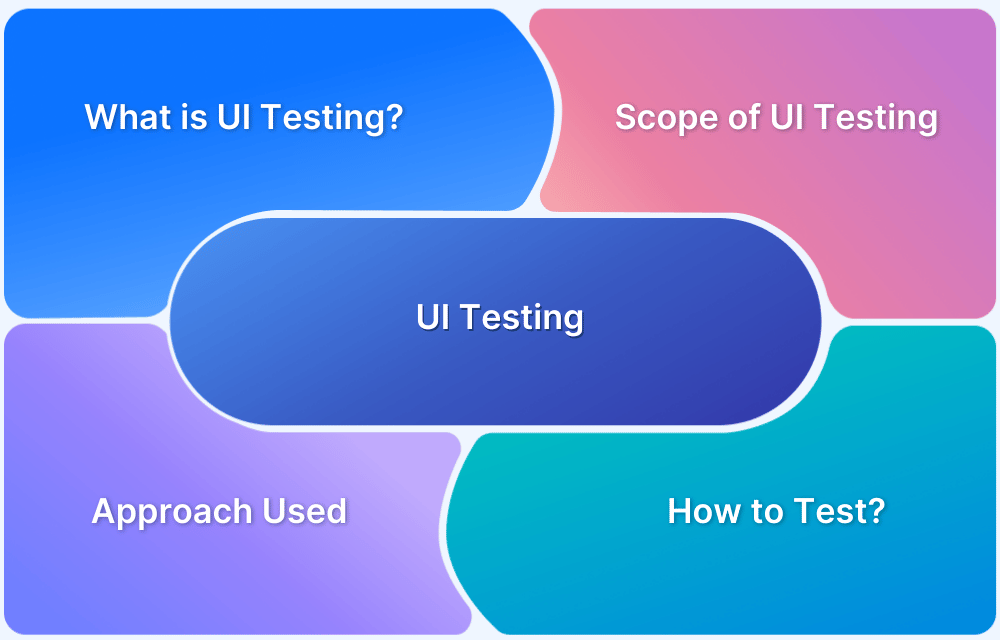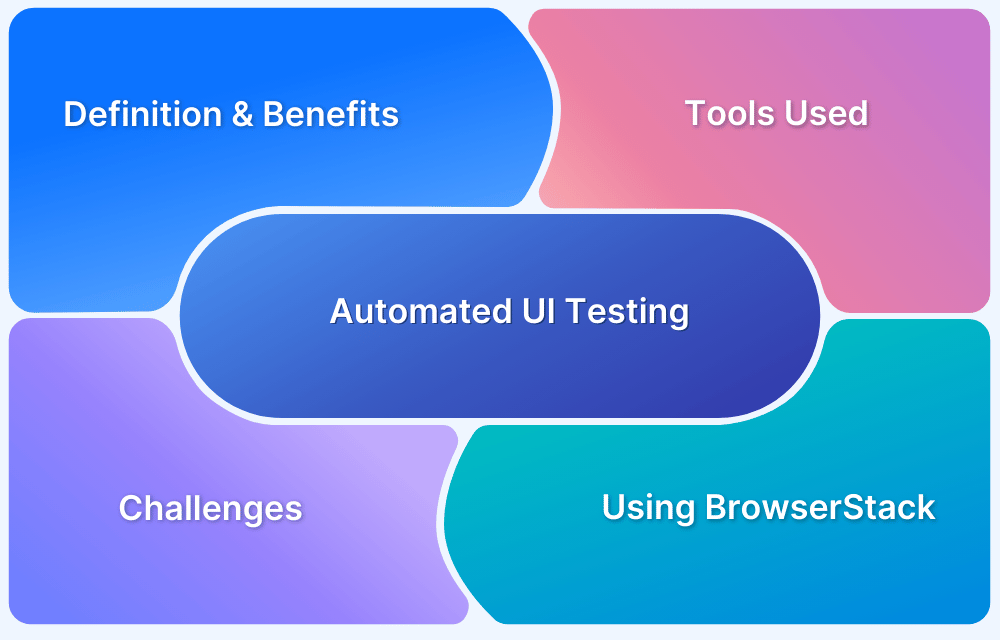How to Perform UI Testing on iOS Devices
By Jash Unadkat, Technical Content Writer at BrowserStack - June 16, 2021
Let’s begin with some key statistics around iOS usage:
- iOS is the second most popular mobile operating after Android with a global market share of 26.47%
- The market share of iOS in developed economies like the US is 58% and 50% in the UK.
- The number of iPhone users in the United States increased to 113.5 million in 2020, and it is expected to reach more than 118 million in 2022.
The stats above reveal how iOS has attracted a significant number of users worldwide, making it a major player in the mobile OS market.
Bear in mind that the user experience of an app relies heavily on its user interface. Users form opinions quickly about an app after their first-time usage. In fact, 21% of users abandon an app after single use due to poor UI experience.
Considering the significant iOS user base, it becomes imperative for iOS developers to develop robust iOS apps with user-friendly UIs. Doing so will help apps maintain an edge over competitors, capitalize on their existing user base and attract new users.
Needless to say, developing bug-free and user-friendly iOS apps demand comprehensive UI testing of iOS apps in real user conditions.
Although developers can use ios simulators in Xcode to run UI tests for iOS apps, it is not the most efficient method to gain accurate test results. This is because simulators only replicate the UI and functionality of iOS devices and are ideal for usage in initial testing. As simulators are software programs, they are slow and are not ideal for faster and accurate testing.
Besides, testing the UI of an iOS app on a specific iOS device or version can be a cumbersome task in Xcode. For developing market-ready apps, thorough testing on real devices is non-negotiable.
This article addresses this challenge by demonstrating an easy method to perform iOS UI testing on real iPhones or iPads for comprehensive testing of iOS apps.
UI Testing of iOS Apps on Real Devices
BrowserStack is a cloud-based testing platform that enables QAs to conduct UI tests for iOS on real Apple devices at scale. Its real device cloud comprises the latest and legacy versions of iPhones and iPads (iPhone 6, iPhone X, iPhone12, iPad Pro, etc.) running on distinct iOS versions.
Follow the steps below to run UI tests on specific iOS devices:
- Signup for a free trial or purchase a specific plan for Browserstack App-Live
- Once the App-live dashboard opens up, click on the Uploaded apps section
- Click on the Upload button and upload the iOS app file (.ipa file) to be tested
- Select the desired Apple handset on which UI testing must be conducted. (Let’s consider testing on iPhone 12 in this example). Refer to the image below for more clarity on the process:

- Clicking on the desired handset will initiate a new App-Live session on it
- The selected iOS file is downloaded and installed on the chosen device (iPhone 12) once the session begins. Refer to the image below:
That’s how easily QAs can start with UI testing of an iOS application on a real iPhone. No complex configurations or set-up required.
One can also leverage the following features to perform extensive UI testing of iOS apps:
- Device rotation to test UI behavior in Portrait and Landscape mode
- Natural gestures and interactions like tap, scroll, zoom, swipe, and more
- Testing the UI in different languages using the Change Language feature
- Testing websites from different geographical locations using Geolocation testing
- Testing in-app purchases and push notifications and few others.
Note: QAs seeking to test use cases or features covered under iOS entitlements like Push Notifications, Keychain Sharing or Data Protection, etc., need to ensure that their iOS app is signed with an Enterprise Distribution Certificate.
Apps that are signed with a Developer Certificate won’t be able to support Entitlement testing. Learn about the difference between Enterprise and Developer Certificate.
Must read: How to Test Push Notifications on Real iOS Devices
As mentioned earlier, iOS is the second most popular mobile operating system globally and has emerged as a fierce competitor against Android. Needless to say, sufficiently inclusive UI testing of iOS apps in real user conditions is a must for ensuring the success of iOS apps.
Try UI Testing on iOS for Free
Thorough testing of iOS apps helps teams achieve the necessary test coverage prior to public release. Without a cloud-based testing platform like BrowserStack, teams need to invest a significant amount of time and money in setting up on-premise device labs including all Apple devices (and keep updating it with new devices). This is not a feasible solution for small or medium-scale enterprises.
Utilizing platforms like BrowserStack is a feasible and convenient solution for teams or individual testers. Simply sign-up for free -> upload the iOS app file -> choose the desired iPhone or iPad -> start UI testing for the iOS app.
Developers can run UI tests on any real iPhone or iPad (like iPhone X, iPhone 12, iPad Pro, etc) from anywhere in the world. As all the tests are conducted on real devices, it helps obtain accurate and reliable test results every time.




